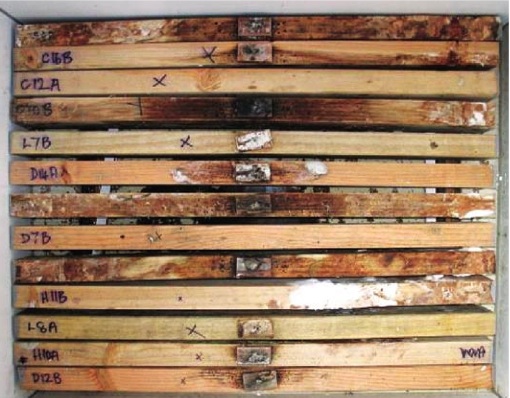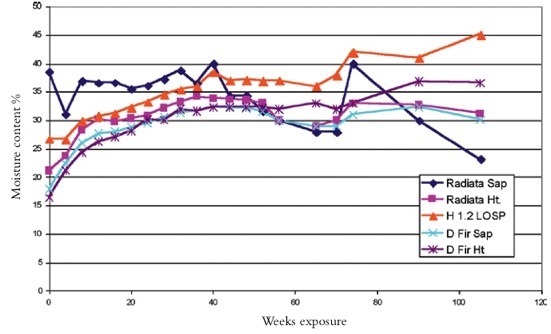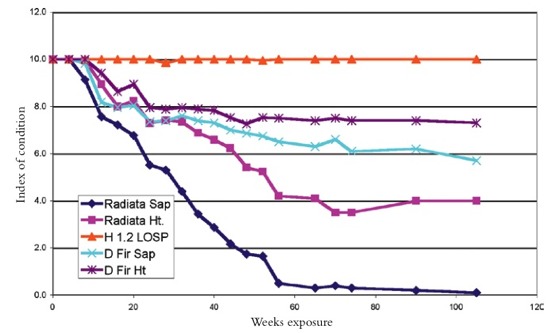Successful durability tests for Douglas fir
Andrew Karalus, New Zealand Tree Grower August 2008.
New durability tests confirm resistance to decay by Douglas fir. The tests show untreated Douglas fir to have equivalence to H1.2 treated pine in stiffness performance, even after almost two years of exposure to accelerated decay trials.

Maintain low moisture
The key in preventing decay is maintaining a low moisture content for the framing timber. That means preventing water getting past the cladding using eaves and appropriate flashings, as well as letting moisture drain out should it get past the cladding so the wood can dry out should it get to the framing timber. With new moisture management systems that incorporate a cavity to allow drainage and drying, the risk of framing timber getting wet is very low.


In fact it is too low when you want to test decay resistance. Researchers would grow very grey and old if they had to wait for decay to start in these moisture-managed systems. Without the luxury of time, researchers design accelerated decay trials. They deliberately shortcut the front line wetting defence systems, wet the timber and hold it at a moisture content over the decay threshold of 30 per cent. They also infect the wood with decay fungus so decay will start sooner and get results more quickly.
Wet and strong for 90 weeks
In a recent study Mick Hedley of Scion tested samples of untreated radiata and Douglas fir heartwood and sapwood samples alongside H1.2 treated radiata pine boards. This was in a harsh decay environment with moisture over 30 per cent, relative humidity over 95 per cent, and exposed to the yearly range of outdoor temperatures.
The results are outstandingly clear. Given that this test replicates a wet house frame it shows that an untreated Douglas fir frame would have to remain wet for more than 90 weeks before it showed any signs of weakness. Should the frame dry below 25 per cent within that 90 week period, then decay would stop and the clock would be reset. In other words if the frame were subsequently wetted to above 30 per cent so that decay could start again, there would be another 90 weeks to go.
Durability difference
The results are not so good for radiata where sapwood showed signs of decay within five weeks and the first radiata sapwood sample failed and broke under test load at 20 weeks.
These results demonstrate very clearly the durability difference between Douglas fir and radiata. The results are an absolute worst case where the timber is wet for almost two years. Given these results it is expected that untreated Douglas fir will once again be recognised as an acceptable solution for low risk house designs. Perhaps even more importantly, the results of H1.2 treated pine shows just how unnecessary it is to have H3.1 treatment within an enclosed timber frame.

 Farm Forestry New Zealand
Farm Forestry New Zealand